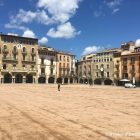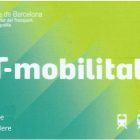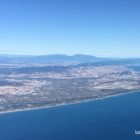Peralada is a picturesque medieval village approximately one hundred and forty kilometres north of Barcelona. The town dates back to the fifth century BC and rose to prominence during the middle ages when it was home to the Counts of Peralada.
Nowadays, Peralada is best known for its impressive medieval castle, El Castell de Peralada, which has been converted into a casino and hosts an annual classical music festival.
Other attractions include the Romanesque Cloisters of Sant Domènec, the well-preserved medieval town centre and the fourteenth-century Convent del Carme, which houses an extensive collection of glassware and ancient books, including 1,000 copies of El Quijote by Miguel de Cervantes.

1. Peralada Castle
The original Peralada Castle was built during the ninth century but was destroyed during the twelfth century when the troops of Philip II of France sacked the village. After the attack, Vescomte de Rocoberti rebuilt the town and ordered a new castle to be built outside the village walls.
During the centuries which followed, the castle was extended and remodelled several times. The impressive towers and most of the Gothic structures date back to the fourteenth century. During the nineteenth century, the building was revamped and redesigned to resemble a French chateau, complete with parklands and an ornamental lake.
The castle was purchased in 1923 by Miquel Mateu i Pla and currently belongs to his family. The building now houses a Casino and isn’t open to the general public, although you are allowed into the gardens to take photos.
2. The Cloisters of Sant Domènec
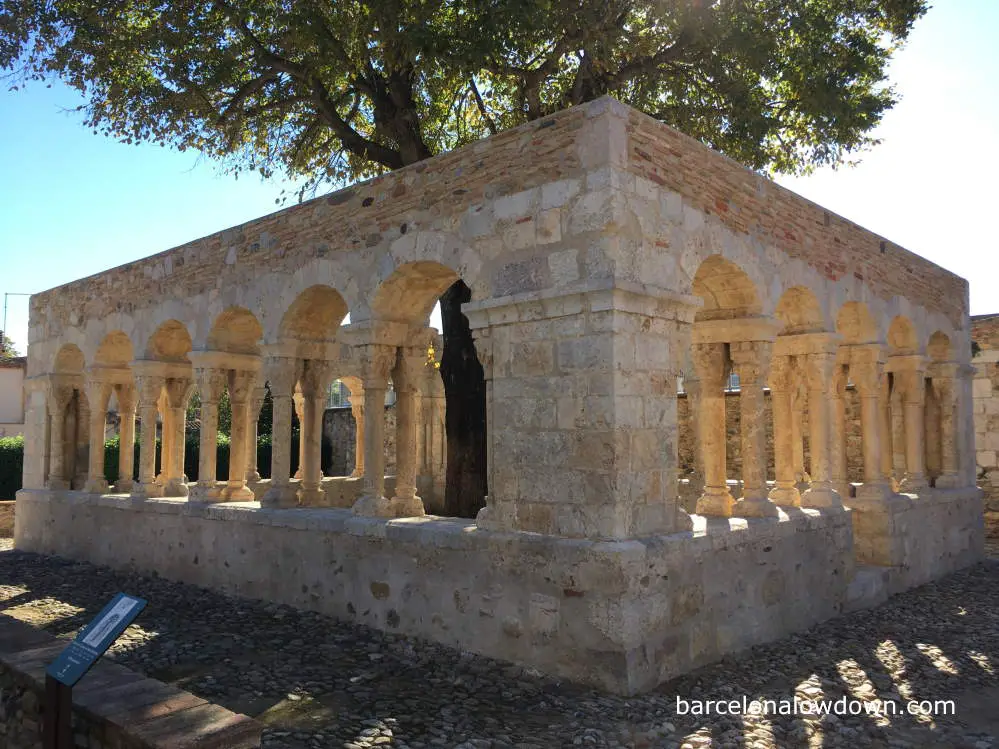
The cloisters of Sant Domènec are all that remains of an eleventh-century Augustinian monastery which once stood on the site.
In 1835, the monastery was handed over to the local council during the ecclesiastical confiscations and was used as a hospital, law courts and barracks. By the end of the twentieth century, it had fallen into ruin and was demolished.
Today, the cloisters are part of the Peralada Town Museum, which also houses the tourist information office and is open daily from Monday to Saturday (see below).
3. Peralada Town Museum town and Tourist Office

Peralada’s town museum and tourist office are located at Pl. de la Peixateria, 6 in El Centre de Turisme Cultural Sant Domènec.
The museum contains a collection of artefacts found in the area and an audiovisual display which recounts the village’s history according to the chronicles of Ramon Muntaner, who was born in Peralada in 1265.
The audiovisual display is available in Catalan, Spanish, English and French.
Opening times:
Monday to Saturday, 10:00 – 14:00 and 15:00 – 18:00
4. El Convent del Carme and the Castle Museum
The Gothic-style Convent del Carmen houses the Castle Museum, which includes a glassware collection and a library with over 8,000 historical books, including 1,000 copies of El Quijote.
You can also visit the convent’s cloisters and church.
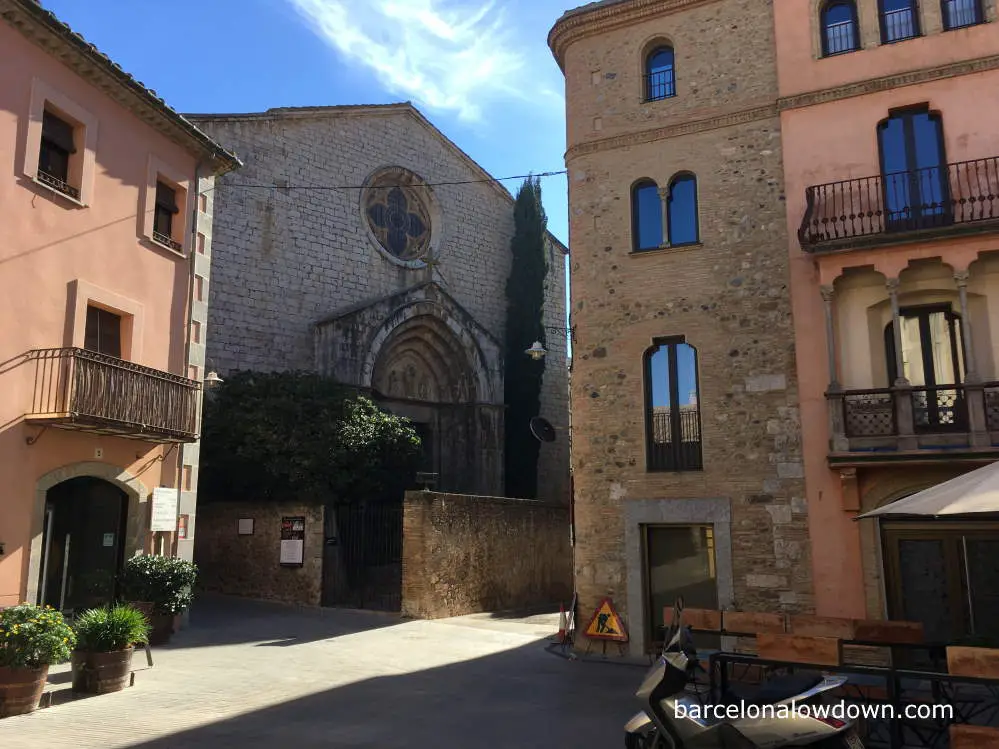
5. Plaça Gran & the Medieval town centre
As in most medieval villages in Catalonia, the historic centre of Peralada is a maze of narrow cobbled streets flanked by stone houses. The village’s main plaza, aptly named Plaça Gran (big plaza), is surrounded by arcaded Gothic buildings with both rounded and pointed arches.
6. Medieval walls
During the medieval period, the village of Peralada was surrounded by two defensive walls. When the first wall was destroyed in 1285, it was replaced by a second wall, much of which is still intact, including El Portal del Conde and El Portal del Carme.
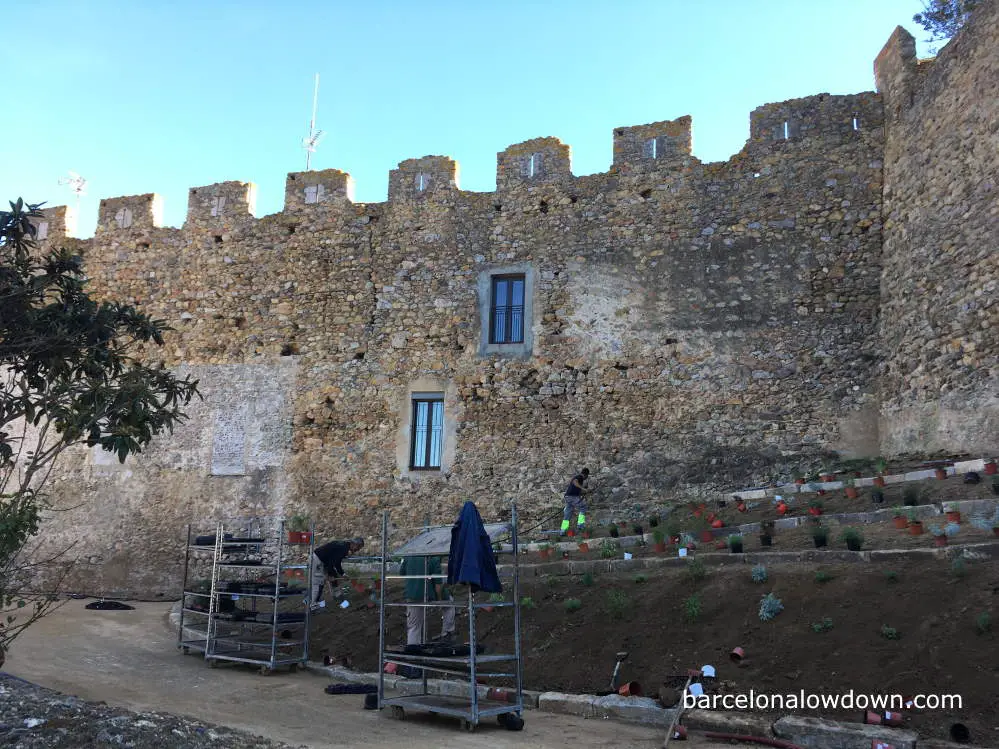
Festivals and events in Peralada
Feria Medieval Na Mercadera
In June, the town stages a medieval fair called Na Mercadera, named after a medieval heroine featured in the chronicles of Ramón Muntaner, which tell the story of life in Catalonia and the Crown of Aragon during the fourteenth century.
Peralada classical music festival
Peralada is best known for the Festival Internacional de Música “Castell de Peralada”, a classical music festival that takes place annually on the castle grounds during July and August.
Where to stay in Peralada
There are two hotels to choose from in Peralada:
The most centrally located is Hotel Peralada, a budget hotel in the historic town centre that gets good reviews on Booking.com.
Located just outside the town, Hotel Peralada Wine Spa and Golf is a luxury hotel with all the facilities you expect at this price point.
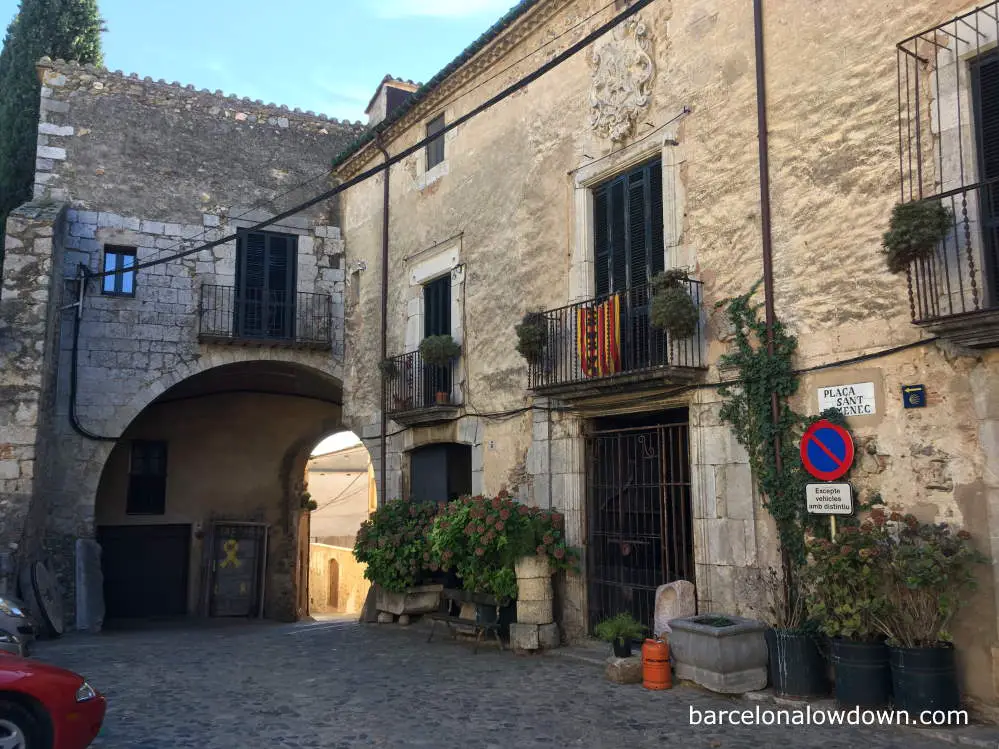
How to get to Peralada and where to park
By Car
Peralada is approximately 140km north of Barcelona, near Figueres.
The easiest way to get here is by car, following the AP7 motorway northbound to exit number 4, which is signposted to Figueres. From here, you take the N-II to Vilabertran, followed by the C-252 to Peralada. The journey takes about an hour and a half.
There are two free car parks in Peralada, both located near the medieval town centre. The first is Parking Peralada, which has facilities for camper vans (water and waste disposal) and is located by the roundabout on the C-252 at the entrance to the old town. The other, smaller car park is nearer the castle entrance at Carrer de la Constitució, 6.
By Public transport
There are no direct buses or trains from Barcelona to Peralada. The most straightforward way to get here is by taking the R11 train from Barcelona to Vilajuiga, followed by bus route number 12 to Peralada.
Train timetables here, bus timetables here.
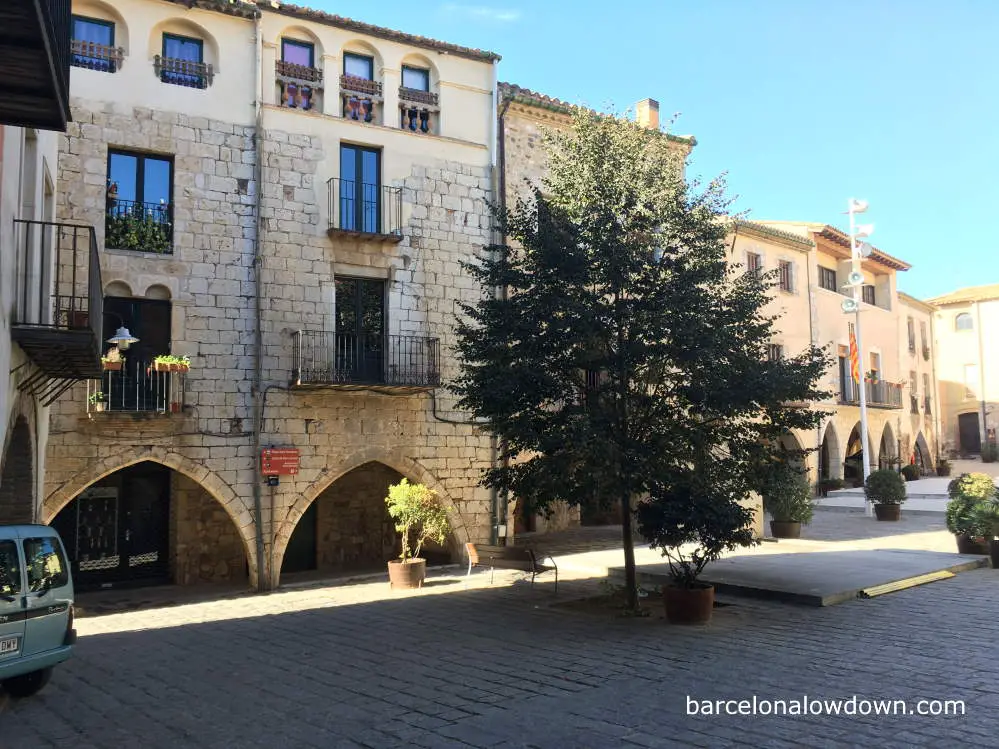
Other places to visit near Peralada
Sant Pere de Rodes
The Romanesque-styled Monastery of Sant Pere de Rodes is one of Spain’s most iconic religious buildings. Set on a mountaintop, the monastery offers visitors excellent panoramic views of the Costa Brava and beyond.
Figueres
Best known as the birthplace of Salvador Dalí, the town of Figueres also boasts an impressive eighteenth-century castle which was built to defend the area against the French.
The city’s main attraction is the Dalí Theatre-Museum, which was designed and built by Salvador Dalí himself and is one of Barcelona’s most popular day trips.
Roses
Located in a large bay on the Costa Brava, the town of Roses was first settled almost three thousand years ago. Best known for its pristine sandy beaches and long sweeping boardwalk, Roses also boasts an impressive seventeenth-century citadel.
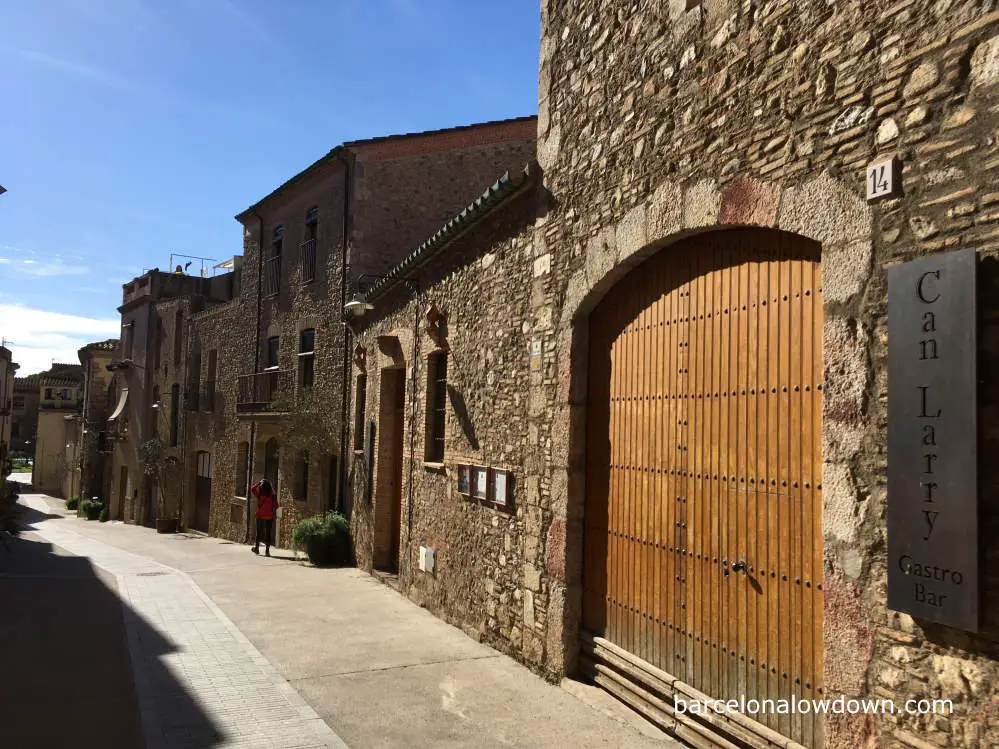
Cap de Creus Natural Park
Famous for its wild and rugged landscapes, which were immortalised in the paintings of Salvador Dalí, Cap de Creus is the easternmost point in mainland Spain. Slightly cut off from the rest of the Costa Brava, since 1998, the area was given Natural Park status to help protect its unique geological and environmental habitat, which is home to some species that are only found in the area.
Cadaques
The picture-perfect village of Cadaques appears in most, in not all, lists of the most picturesque villages in Spain.
Once a busy port whose economy was based on fishing, wine-making and olive oil production, Cadaques found fame during the 1930s when Salvador Dalí moved here with his lover Elena Ivanovna Diakonova.
Map of Peralada
Zoom in to see the places mentioned in this post.
Carrer Sota Muralla, Peralada
Plaça Gran, Peralada
Plaça del Carme, Peralada
Plaça de la Peixateria, 6, Peralada
Peralada, Girona

